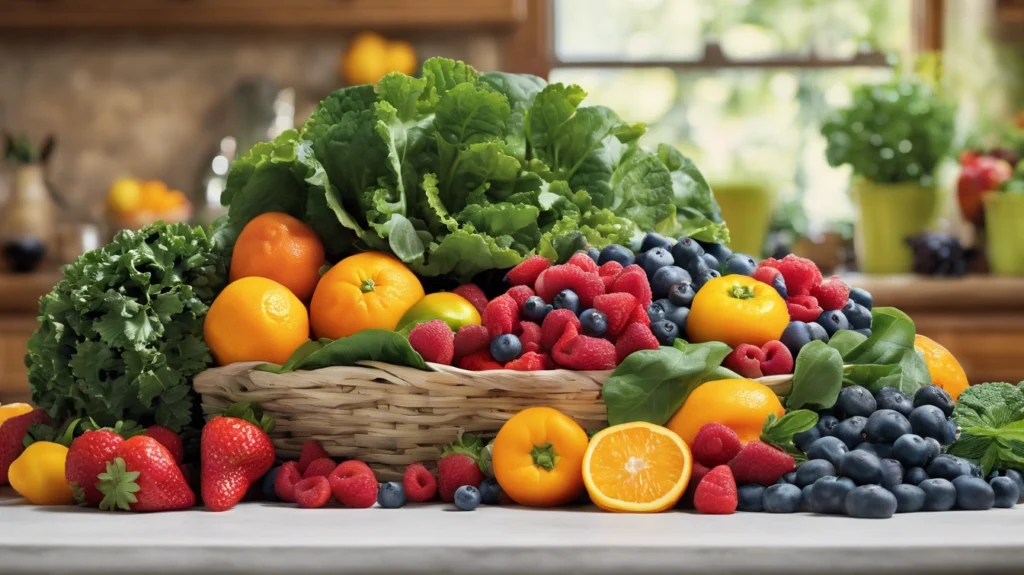
Simple Ways to Lower Breast Cancer Risk Naturally.
What if something as simple as adding more colorful fruits and veggies to your plate could boost your breast health? Good news—it can! With a few simple swaps and a splash of color, you can take charge of your health and lower your risk of breast cancer, one bite at a time. Ready to dive into a world of flavor, fun, and better health? Let’s make those greens (and reds, oranges, and purples) work for you!
Why Colorful Foods Matter
You might be wondering: why does color matter so much when it comes to your food? Well, each hue you see on your plate actually represents different nutrients, antioxidants, and phytochemicals that help protect your cells, boost your immune system, and lower inflammation. The more color you eat, the wider variety of these powerful nutrients you’re getting, which is great news for your overall health—and especially for breast health.
The Power of the Rainbow on Your Plate
Let’s break it down by color. Every color of fruit and vegetable has unique benefits:
Reds (Tomatoes, Strawberries, Red Peppers): These vibrant foods are rich in lycopene, which has been shown to help protect cells from damage. They also contain vitamin C, an immune-boosting antioxidant.
Oranges & Yellows (Carrots, Sweet Potatoes, Oranges): Think of these as your “glow” foods. They’re full of beta-carotene (a precursor to vitamin A), which supports your immune system, and can also help reduce oxidative stress, which is great for protecting cells from damage.
Greens (Broccoli, Kale, Spinach): These are some of the most nutrient-dense veggies out there. Leafy greens and cruciferous vegetables (like broccoli and Brussels sprouts) contain sulforaphane, which has cancer-fighting properties. Plus, greens are packed with fiber, which supports a healthy gut and helps regulate hormones—important for breast health.
Blues & Purples (Berries, Eggplant, Purple Cabbage): These foods get their color from anthocyanins, powerful antioxidants that fight inflammation and support overall health. Berries, in particular, are loaded with vitamins and are lower in sugar than many other fruits, making them a great choice for daily snacking.
Whites & Browns (Cauliflower, Garlic, Mushrooms): Don’t forget these more neutral tones! Garlic, onions, and leeks contain allicin, which has immune-boosting and anti-inflammatory effects. Cauliflower and mushrooms are versatile, fiber-rich foods that add nutrients without overpowering flavors.
How to Get More Colorful Foods into Your Diet
So, now that you know why colorful fruits and veggies are so powerful, let’s talk about how to easily add more of them into your meals. The key here is to make it simple and fun—eating healthy doesn’t have to be complicated or boring!
1. Start Your Day with a Smoothie
Breakfast is a great time to pack in the fruits and veggies. Blend up a smoothie with spinach, berries, banana, and a scoop of nut butter. You’ll be starting your day with a burst of vitamins, fiber, and healthy fats. Plus, you can mix up the ingredients depending on what you have at home, so it never gets old.
2. Add a Side Salad to Your Meals
Making a salad doesn’t have to be a big production. Throw together mixed greens, cherry tomatoes, shredded carrots, and some sliced avocado, and you’re done! A quick drizzle of olive oil and lemon juice is all you need to keep it tasty and healthy. Adding a salad to lunch or dinner is an easy way to boost your veggie intake without a lot of effort.
3. Snack Smart
Swap out those chips or cookies for crunchy, colorful snacks. Try baby carrots with hummus, bell pepper strips, cucumber slices, or apple wedges with almond butter. Keeping fresh fruits and veggies pre-cut in the fridge makes healthy snacking easy, and it helps you reach for something colorful when you’re in a hurry.
4. Make Colorful Bowls for Lunch or Dinner
If you’re a fan of easy, one-bowl meals, you can make a “Buddha bowl” packed with color. Start with a base like quinoa, brown rice, or mixed greens, and top it with roasted veggies (think sweet potatoes, broccoli, and bell peppers), a protein source like chicken, beans, or tofu, and finish with a sprinkle of seeds or nuts for crunch. Drizzle with a tahini sauce or lemon vinaigrette for a burst of flavor.
5. Embrace Meatless Meals
Try going meatless once or twice a week, focusing on plant-based meals. Dishes like a vegetable stir-fry, bean chili, or pasta with a rich tomato and veggie sauce can help you get in those cancer-fighting nutrients without feeling like you’re missing out. The variety of flavors and textures in plant-based meals can be both filling and satisfying.
Why Small Changes Matter
You don’t need to overhaul your entire diet overnight—small steps can make a big difference! The goal isn’t perfection; it’s about adding more goodness to your plate so your body can reap the benefits. Little by little, those extra servings of fruits and vegetables add up, providing your body with the tools it needs to thrive and help lower your risk of breast cancer.
A Colorful Life Is a Healthier Life
Incorporating more fruits and vegetables into your meals is not only great for your breast health but for your overall wellness. Plus, these foods are packed with flavor, nutrients, and color that make meals more enjoyable. So next time you shop, look for a rainbow of options and mix things up. Your body (and your taste buds) will thank you.
So go on—eat the rainbow, add a little more color to your life, and take an active step toward better health today! 🌈
